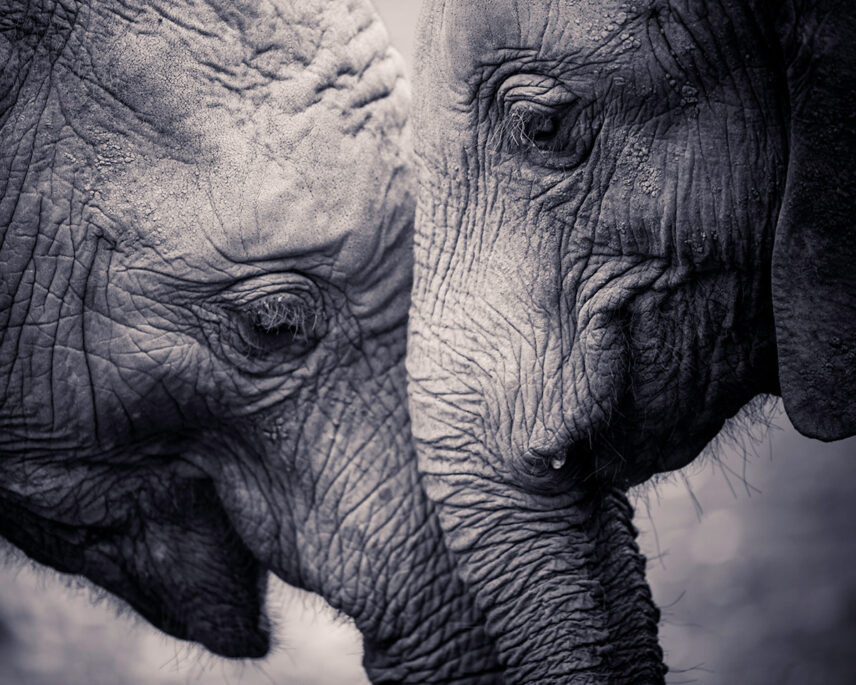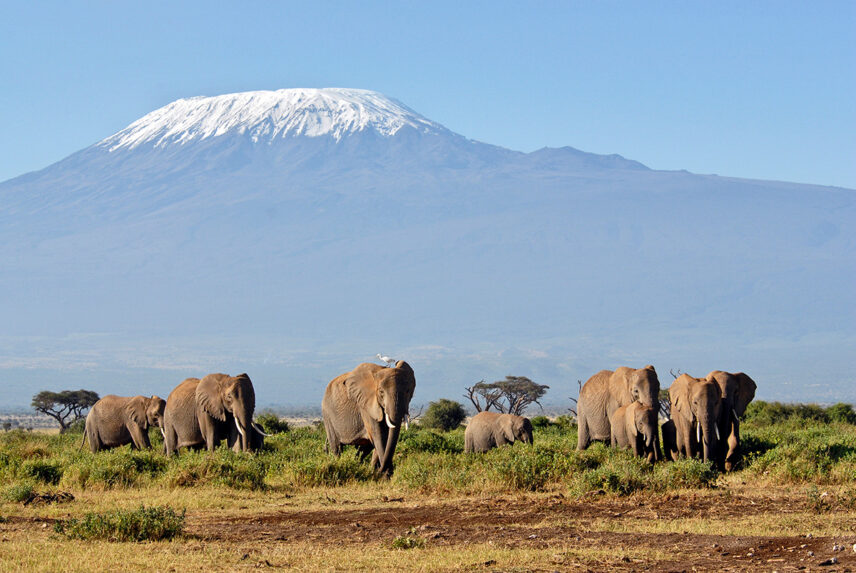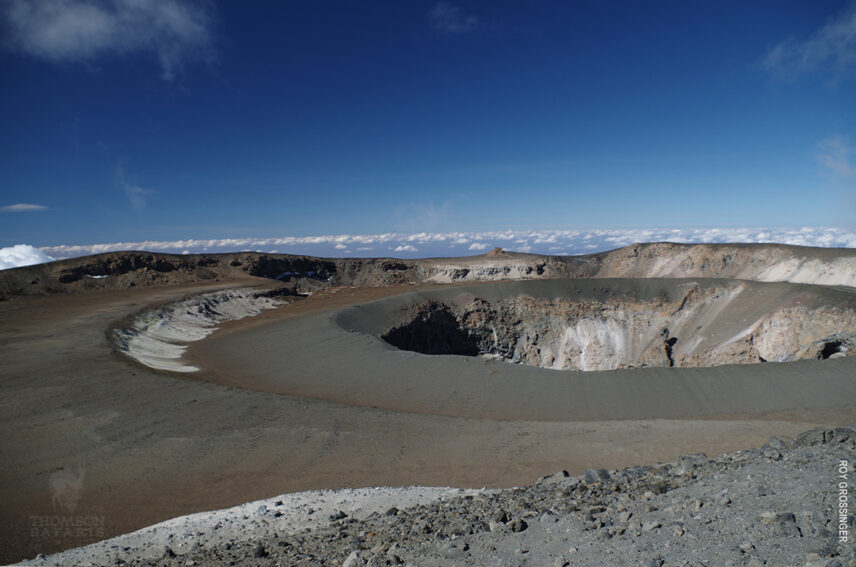There’s a secret on Kilimanjaro, according to the legends of the Chagga people.
Somewhere past the snowline of Kilimanjaro, deep inside a mysterious, hidden crater, a massive elephant graveyard lays tucked away amid the snowdrifts. Countless tons of elephant remains and ivory stretch across the crater floor, if you believe the legends of Kilimanjaro’s Chagga people.
When an elephant senses its time has come, it lumbers past the snowline of Africa’s tallest mountain to a precarious cliff at the edge of the hidden crater. As the tale goes, thousands of old elephants have jumped from the crater rim to join their ancestors in the boneyard below.
Why? According to the Chagga people, the elephants near Kilimanjaro do this to foil the poachers who hounded them in life, stowing their ivory in a remote, nearly unreachable, final resting place.
Any individual who finds the hidden crater and manages to climb down is warned: Take just one piece of ivory – the first one you find – or be cursed on the spot.
The tales of the curse vary; some say it causes sudden blindness, and others say individuals will simply never escape crater. But all agree – the same greed that drives poachers spells doom for graveyard visitors.
At least, that’s how the legend goes…
Elephant Graveyards and Empathy

While elephant graveyards may have been popularized by tall tales in Africa and scenes from The Lion King abroad, elephant graveyards are more myth than fact. However, there’s some truth behind this legend.
Elephants are one of the few creatures that seem to grieve for their dead. They fall silent while inspecting remains, and there have been accounts of crude burial rituals using twigs, leaves and dirt.
Supposedly, elephants don’t reserve “burial” just for their own either. Some game wardens tell stories of elephants burying dead or sleeping people under a pile of branches, but this behavior doesn’t extend to any other animals. It’s important to note that these reports are anecdotal, however.
What we do know is elephants are some of the most intelligent creatures on the plains, and they have shown incredible, convincing displays of empathy. For many in Africa, this has given the elephant a mystical quality. Their emotional capacity is amazing already – is it that much harder to believe they would want a common resting place?
The Facts Within the Fiction
The sad truth is, many people in Africa want to believe in elephant graveyards because finding such a place would be like stumbling across El Dorado. Ivory still has such incredible value despite conservation efforts to end the ivory trade. That romantic, treasure-hunter outlook helps the legend persist.
What’s more, it’s difficult to differentiate between a “graveyard” and simply a more treacherous area in the elephant’s migration route. Traveling miles through barren, sub-Saharan Africa might be fatal for a herd, but that’s not the same as the creatures designating a certain place as their graveyard.
What about Kilimanjaro specifically? Elephants have lived on the mountain for thousands of years, and though populations have dwindled, there is still evidence of herds in the forests. Could an elephant really climb to Kilimanjaro’s snowline?

Some evidence suggests it’s possible. In his introduction to the book Kilimanjaro: To The Roof Of Africa, famed photographer and filmmaker David Breashears tells of the time he heard stories of elephant bones high on Kilimanjaro… and eventually he found a skeleton 15,000 feet up the mountain.
Was it cursed? Nobody knows; Breashears didn’t try to take it down with him.
